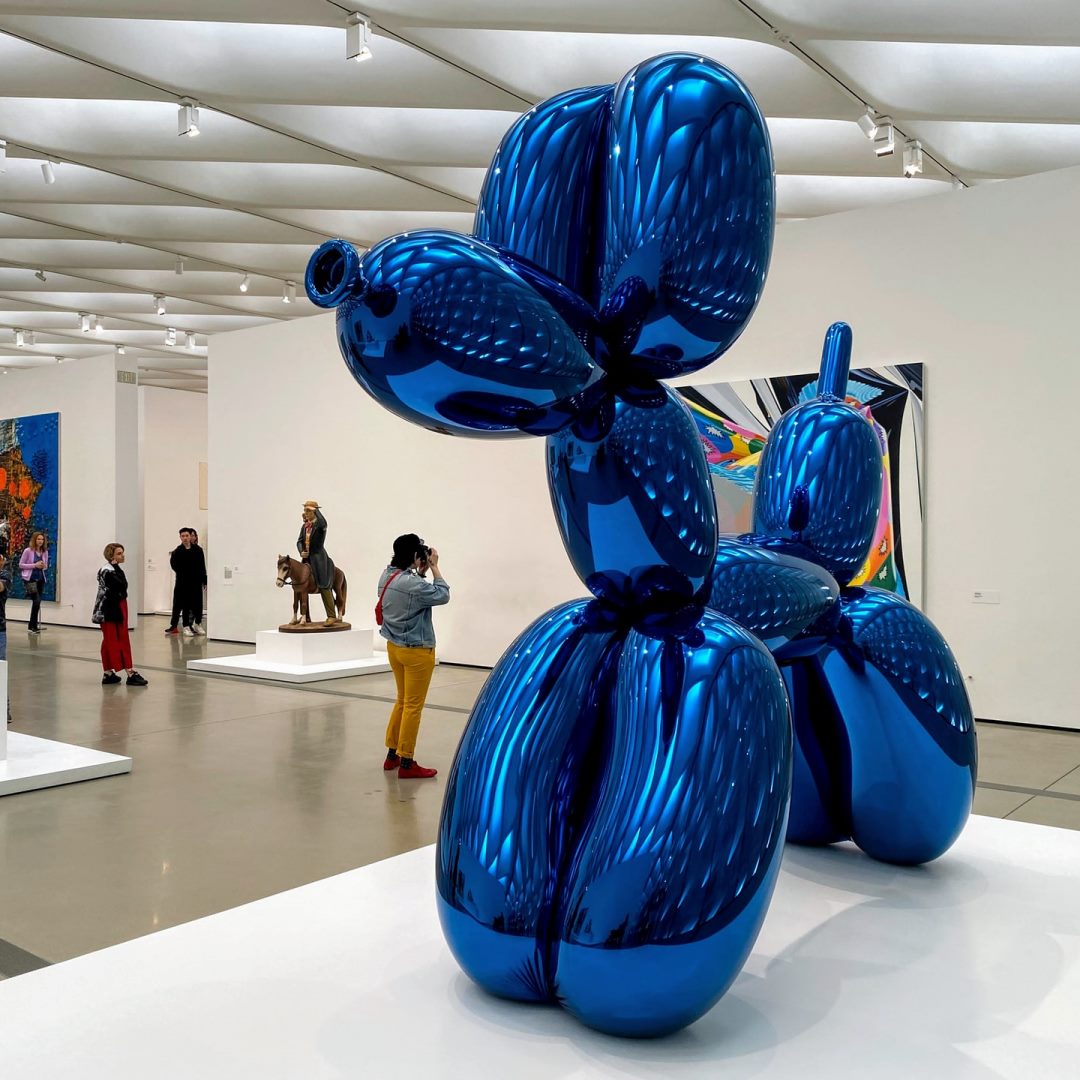In the business world, the term “blue chip” refers to large or established companies, stocks, or assets. Their value is universally accepted, and investing in them is considered a safe bet. This can be compared with “speculative” assets, which are less established, have a lot of growth potential but could also crumble into nothing in the case of an economic crisis.
Blue chip artworks are those that have been created by universally recognized artists. Their position in the auction markets will have been well established over many years of solid sales. It doesn’t matter how valuable the artwork is to museums, collectors, or history. What really matters is the resale value.
Blue chip artists are considered masters. Some of the top-ranking artists at auction are Picasso, Calder, Miro, Chagall, Dali, and Buffet. Many art collectors buy artwork for the sheer love of it. However, it is impossible to ignore the possible returns.
Origin of the Term
The term “blue chip” stems from its use in the stock market. Blue chip stocks sell for high prices because of public confidence in their steady, long-term earnings. This term comes from poker, where the blue chips are usually the most valuable. When art became a commodity, it adopted this language.
Blue chip art has a high price tag, is reliably profitable, and is expected to increase its economic value steadily. Blue chip artists are icons of the art world. As well as blue chip art, we can also talk about blue chip art galleries. These are galleries that focus on selling artworks from well-established artists. The artwork at these galleries is authenticated by professionals and will most likely keep increasing in value.
Speculative Art vs. Blue Chip Art
It might be possible to buy a painting for $10,000 at any New York art gallery in the hopes that it will one day be worth millions. However, the likelihood of this happening is the same as winning the lottery or being struck by lightning. At the other end of the spectrum, “investment-grade” art can carry a price tag of 6 to 8 digits. These artworks have a wide collector base, and they show much more predictable rates of economic appreciation.
Blue Chip Art vs The Stock Market
Since the year 2000, the very top of the art market has appreciated at an average annual rate of 8.9%, while the stock market has trailed significantly, growing at a rate of 3.4% over the same time period.
Buying a work of art is akin to buying stock in a company. Blue chip artists and companies are both high-quality and offer assured liquidity. The Artprice 100 index looks at the high end of the artwork market. The index is adjusted annually and shows the economic performance of the highest-rated artists and artworks.
Over the last 18 years, the artworks on The Artprice 100 index have seen incredible increases in value, outperforming the stock market by over 250%. These artworks are also shown to retain their value much more consistently than the stock market during an economic crash. In 2009, when the stock market dropped 57%, the Artprice 100 index only dropped 26%. Prices for artworks of exceptional quality seem to be very resilient.
How to Invest in Blue Chip Art
When investing in blue chip art, there are a few things to consider. Buying artwork that you like can be important, but it is not a requirement. Many art investors aren’t experts in the world of art. They may be “everymen” looking to diversify their investment portfolio.
If looking to invest in art, it is always a good idea to work with an expert. These informed professionals can be critical in making sure your investments are smart. Google can give you a ton of information, but it is no replacement for someone who is deeply connected to the art world. A trusted expert will be able to give you insider information.
Blue chip artworks can sell for vast sums of money. In 2020, David Hockney’s Nichols Canyon sold for $41 million dollars. While it is very likely this artwork will increase in value, most of us cannot afford these sums. A company like Masterworks allows you to buy a share in paintings by well-known artists. It is the first company that offers crowdfunding, fine art investment opportunities.
Many investors have diversified portfolios with a mixture of stocks, bonds, real estate, precious metals, etc. If you want to invest in art, you may also consider investing in different artists, styles, and mediums. Trends can come and go, and by diversifying your art portfolio, you increase your chances of making big profits.
Is It a Good Investment?
The answer to this is not a simple yes or no. Despite artworks by the top 100 artists performing very well, the market is still volatile. Like all investments, it comes with risk. When making any investments, you may want to consider the best investment newsletter to sign up for. If you bought an artwork by Jeff Koons for $100 in 2000, it would only be worth $54 in 2018, showing that these artworks can also depreciate.
Another thing you may want to consider is the lack of diversity in the art world. The Artprice 100 index only includes four female artists, and there is also little racial diversity.
You always need to do your own research and consider whether you think they will still be a top artist in 10 or 20 years. You must believe in the history and the future of that particular artist and artwork.
In Summary
Blue chip artwork is generally considered a safe bet for any investor looking to expand and diversify their portfolio. It is artwork that has been created by household names that are likely to increase in value steadily. If you cannot afford blue chip art, it is now possible to buy “shares” in famous works of art. As with any investment, it is essential that you do your research.
